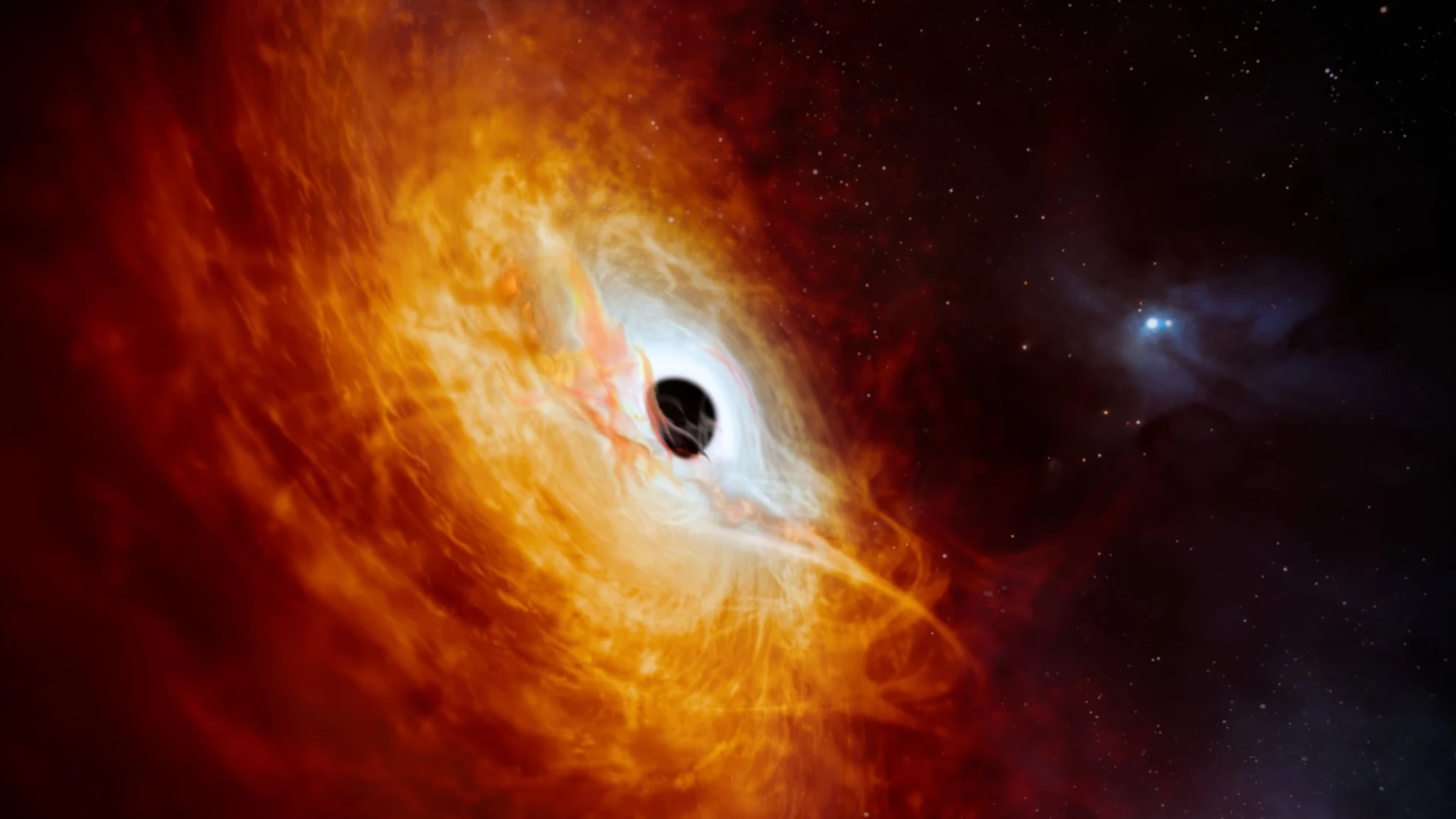
Brightest object in the known universe found hiding in plain sight
This monster quasar is consuming one Sun's worth of matter every day, making it the fastest-growing supermassive black hole ever found and the brightest object in the known universe!
Astronomers have found the most luminous object in the known universe, hiding in plain sight.
Quasars are the brightest objects in the cosmos. So bright, in fact, that when they were first spotted in the 1950s, they were mistakenly thought to be stars in our own Milky Way. However, quasars are actually entire galaxies unto themselves, located billions of light years away from us.
They appear so bright due to the supermassive black hole that lies at the core of each of these objects. As matter streams into these immense black holes, they blast out intense beams of light that stretch across the cosmos.

A quasar is depicted in this artist's conception drawing, showing a galaxy with twin beams of light being projected out into space by the active supermassive black hole at its core. Credit: ESO
Now, a team of astronomers have spotted a previously undiscovered quasar, which they named J0529-4351.
J0529-4351's supermassive black hole isn't the most massive one ever found. It's 'only' 17 billion times the mass of our Sun (compared to others that weigh in at roughly four times that).
However, it is a record-breaker in more ways than one.
Consuming just over one Sun's worth of matter each and every day, it is the fastest growing black hole detected so far. Also, the intense amount of energy it emits in the process of eating all that matter makes it the brightest quasar ever seen.
And since quasars are already the brightest objects in the universe, "this is also the most luminous known object in the universe. It's 500 trillion times brighter than our Sun," Christian Wolf, the Australian National University astronomer who led the new study on J0529-4351, said in an ANU press release.

This artist's depiction of J0529-4351's supermassive black hole reveals what the space around this record-breaking object might look like. Credit: ESO/M. Kornmesser
Wolf went on to describe what this monster might look like, and the conditions surrounding it, using more familiar weather terms.
"It looks like a gigantic and magnetic storm cell with temperatures of 10,000 degrees Celsius, lightning everywhere, and winds blowing so fast they would go around Earth in a second," he explained. "This storm cell is seven light years across, which is 50 per cent more than the distance from our solar system to the next star in the Galaxy, alpha Centauri."
Hiding in plain sight
According to Wolf and his colleagues, J0529-4351 has actually been observed more than once already.
They found it in sky survey data dating back to 1980. It was also catalogued by the ESA's Gaia satellite, which launched into space in 2013 to create a precise, 3D map of our universe.
So, why wasn't J0529-4351 identified as a quasar until now? It was too bright!
"Finding quasars requires precise observational data from large areas of the sky. The resulting datasets are so large, researchers often use machine-learning models to analyze them and tell quasars apart from other celestial objects," says the ESO. "However, these models are trained on existing data, which limits the potential candidates to objects similar to those already known. If a new quasar is more luminous than any other previously observed, the program might reject it and classify it instead as a star not too distant from Earth."

This image shows the region of the sky in which the record-breaking quasar J0529-4351 is situated. This picture was created from images forming part of the Digitized Sky Survey 2, while the inset shows the location of the quasar in an image from the Dark Energy Survey. Credit: ESO/Digitized Sky Survey 2/Dark Energy Survey
Even the automated processing of the data from Gaia simply flagged J0529-4351 as a star, given its brightness.
It was only after observing it from the Siding Spring Observatory in Australia that these researchers were able to identify it as a quasar, with the ESO's Very Large Telescope (VLT) providing them with the data they needed to confirm it as the record-breaker it is.
"It is a surprise that it has remained unknown until today, when we already know about a million less impressive quasars," co-author Christopher Onken, an astronomer at ANU, told the ESO. "It has literally been staring us in the face until now."











